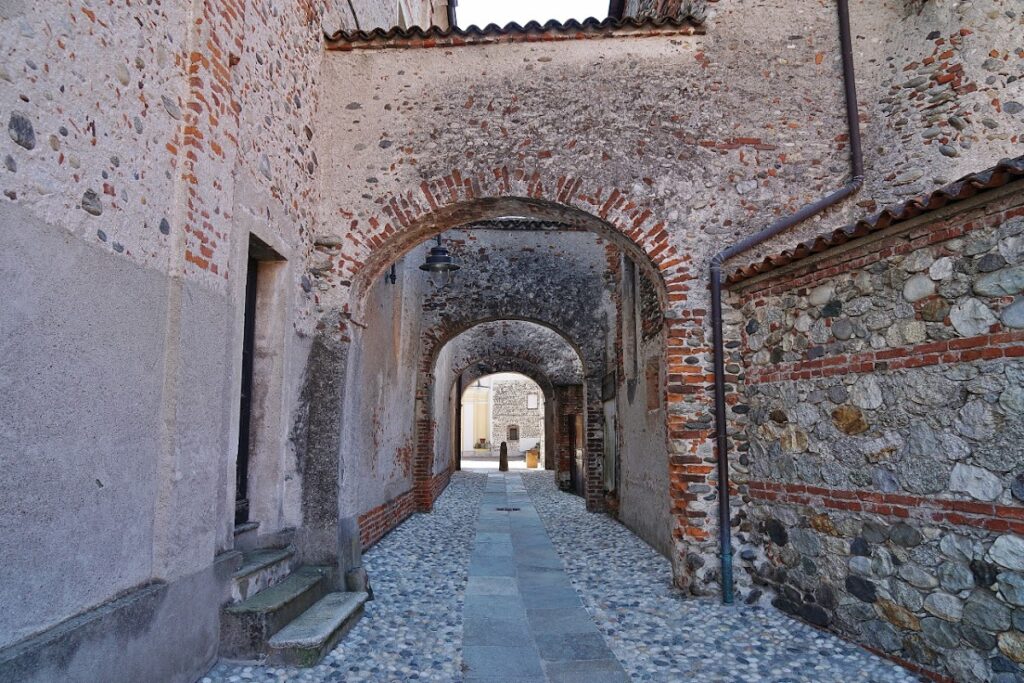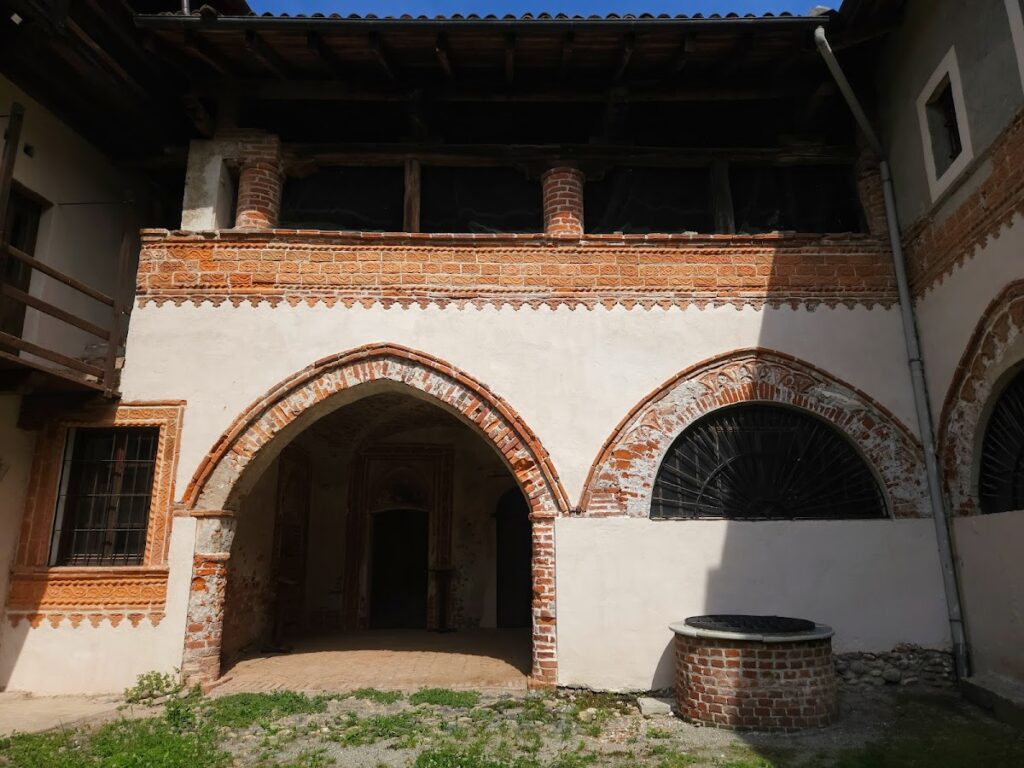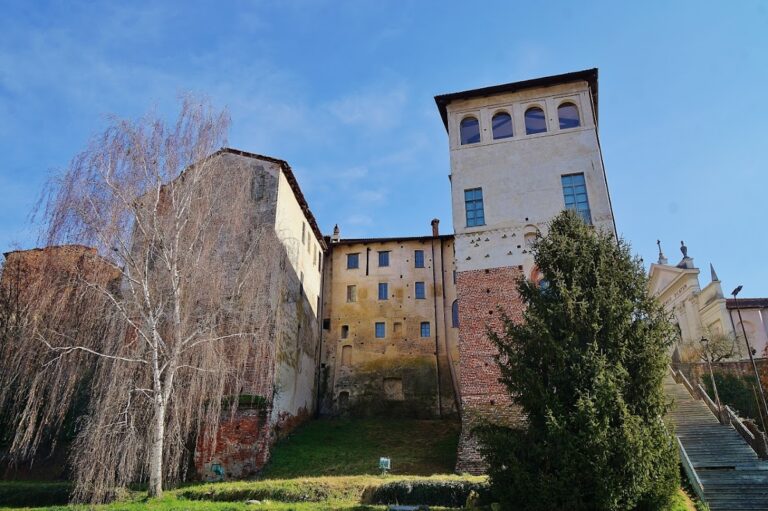Castello monastero di Lenta: A Fortified Monastic Complex in Piedmont, Italy
Visitor Information
Google Rating: 4.6
Popularity: Very Low
Google Maps: View on Google Maps
Official Website: www.comune.lenta.vc.it
Country: Italy
Civilization: Unclassified
Remains: Military
History
The Castello monastero di Lenta is a fortified religious complex located in the municipality of Lenta, Italy. It was established by medieval communities and reflects the development of monastic and defensive structures in the Piedmont region.
The origins of the site may date back to the 10th century, as suggested by indirect references from Ingone, the bishop of Asti. However, its existence is firmly documented beginning in the 12th century, when the complex included a protected settlement centered on the female Benedictine monastery of San Pietro Martire, founded in 1127. By the mid-1100s, records mention a castrum—a fortified area—encompassing part of the village, whose inhabitants were sometimes identified with the name “de castro,” indicating their connection to the fortification.
During the 13th century, the village underwent further fortification. Its defensive perimeter was enhanced with walls and a moat, in line with the mandates of the Comune of Vercelli, which required local communities to maintain protective structures to safeguard against external threats. This development reflects the broader strategic importance of the site along routes connecting the lowlands to the Valsesia valley.
Scholars have debated whether the main fortified area functioned primarily as a borough—a small community with certain self-governing characteristics—or served instead as a ricetto, which is a defensive refuge often tied to noble or religious authorities. The population remained relatively stable, supporting the idea of a signorial and monastic stronghold rather than a typical borough. Over time, the castle-monastery acquired considerable influence through inheritances and gifts, coming to control most of the land in Lenta and its surroundings. It also held rights over water sources, mills, and tolls, consolidating its economic and territorial power.
In later centuries, the site fell under the influence of the Arboreo family, known also as Arborio, from nearby Gattinara. Despite secular control, the Benedictine convent retained jurisdiction over the castle-monastery. Documents from 1404 reveal a dual authority: the Arborio family pledged allegiance to Amedeo VIII of Savoy, while the nuns maintained loyalty to the Marquis of Monferrato. This arrangement demonstrates the monastery’s relative autonomy from secular rulers and its importance as a religious institution with distinct political ties.
The decline of the castle-monastery began in the late 16th century. In 1572, papal decrees issued by Cardinal Guido Ferrero and the Popes Gregory XIII and Pius V ordered the nuns to move to the monastery of San Pietro Martire located in the city of Vercelli. This relocation marked the gradual cessation of monastic life in Lenta. The Benedictine convent itself was officially suppressed in 1802.
Following the end of its religious function, the complex was divided between private owners and the local municipality. The town hall operated within parts of the site until around 1840. Today, the entire castle-monastery belongs to the municipality and has been recognized as a protected cultural heritage site.
Remains
The Castello monastero di Lenta features an integrated fortified enclosure known as a ricetto, which served both defensive and religious purposes. The layout of the complex is characterized by an “L”-shaped main body that encloses an internal courtyard, suggesting a design intended to balance communal living, security, and monastic functions. Its position formed part of a defensive chain guarding the route from the plains up to the Valsesia valley.
At the southern end of the complex stands the church of San Pietro Martire. Beneath this church lies the crypt dedicated to San Biagio, preserved in the basement and serving as an important religious space within the monastery. The presence of the crypt indicates longstanding spiritual traditions and the veneration of saints connected to the site.
Surrounding the complex is a curtain wall, a defensive barrier finished with battlements designed to protect against attackers. The western side of this wall is reinforced by two towers, which would have provided vantage points for observation and defense. These fortifications date to the period when the settlement incorporated military elements as mandated by local authorities in the 13th century.
Within the monastery’s cloister, pointed arches, known as ogival arches, are a notable architectural detail. These arches reflect Gothic artistic influences from the medieval period and contribute both aesthetic and structural qualities to the space intended for contemplation and circulation.
Some frescoes from the 15th century have survived inside the complex. These painted decorations offer valuable insights into the artistic and devotional life of the monastery during the late Middle Ages. Their preservation attests to the care given to the religious environment before the monastery’s decline.
Overall, the remains at the Castello monastero di Lenta display a combination of defensive, religious, and residential features that document its evolution over several centuries as a fortified monastic center within the landscape of medieval Piedmont.










